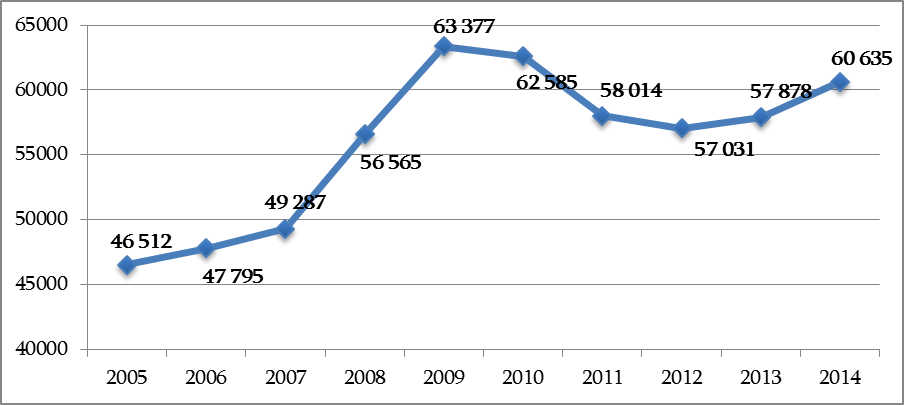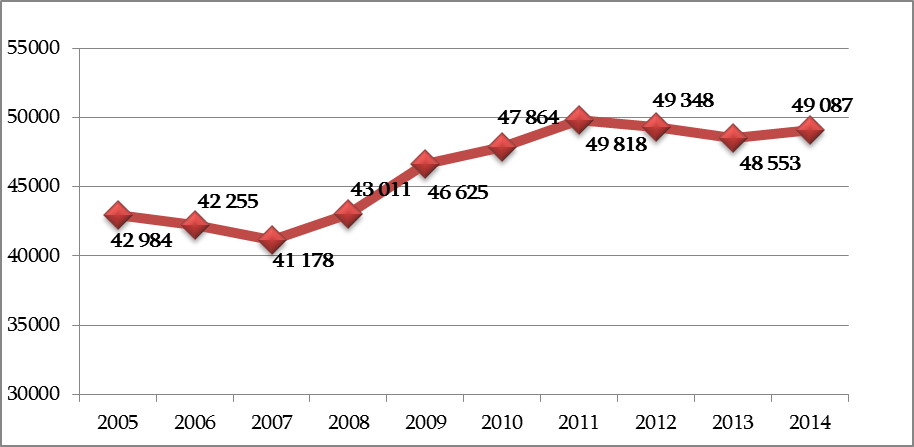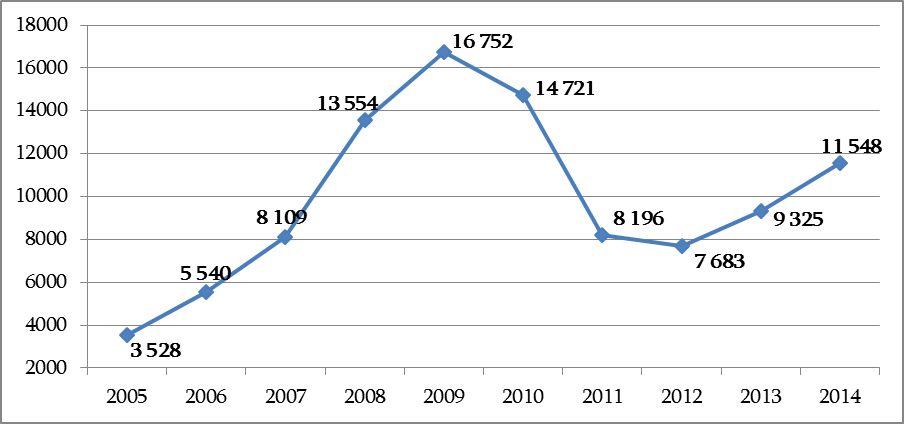On 1 April 2015, at the plenary session of the Parliament of Georgia, the Chairman of the Health and Social Affairs Committee of the Parliament, Dimitri Khundadze, elaborated upon the demographic data. "The population of Georgia has been growing for the past two years. According to the 1 January 2014 data, the population of the country grew by 6,700 people… the number of live births has also increased by 2,757 babies. The number of deaths has increased slightly, following a significant decrease during the previous year. However, the number of infant deaths up to the age of one year has never been so low for the past nine years. The natural population increase has grown by 2,223 in 2014," said Mr Khundadze, adding that: "It would be good if the President had included this fact in his address to the Parliament, elaborating upon the serious demographic situation in the country and the numerous measures taken by the Government of Georgia for the past two years which have positively changed the demographic trends in the country."
FactCheck took interest in Dimitri Khundadze’s statement and verified the accuracy of the stated facts.
According to the 1 January 2014 data (which, in fact, reflect the situation for 2013) the population of Georgia equalled 4,490,500 which is 6,700 more than in 2012. Looking at the demographic situation for 2014 means utilising the data of 1 January 2015 which have not yet been published.
On 31 March 2014, the National Statistics Office of Georgia published the 2014 general demographic data. Dimitri Khundadze based his statement upon these data.
The number of live births grew by 4.8% (2,757 babies) in 2014 as compared to 2013. The number of live births had a trend of increase from 2006 to 2009. It decreased from 2010 to 2012 but increased again in 2013 and 2014. The highest number of live births from 2005 to 2014 was registered in 2009 and 2010 (see Chart 1).
Chart 1: Number of Live Births
The number of deaths increased by 1.1% in 2014 as compared to 2013 and reached 49,087 people. There was a decrease in the number of deaths in 2013 and 2012 (see Chart 2). The number of stillbirths also increased in 2014. As for the number of infant deaths up to the age of one year, this figure decreased by 9.7% in 2014 and amounted to 578 which is the lowest number for the past several years.
Chart 2: Number of Deaths
The natural increase rate (the difference between the number of live births and deaths) grew by 23.8% as compared to the previous year. It increased in 2013 as well. It should be noted that the highest rates of natural increase from 2005 to 2014 were recorded in the period from 2008 to 2010 (see Chart 3).
Chart 3: Natural Increase
It should also be noted that the number of registered marriages decreased by 9.1% in 2014 whilst the number of divorces increased by 27.5%.
As for the measures taken by the state in order to improve the demographic situation:
In terms of the universal healthcare programme, natural childbirth is funded by GEL 500 whilst caesarean section birth is funded by GEL 800. A targeted government programme aimed at facilitating the improvement of the country’s demographic situation was enacted on 31 March 2014. It included the financial encouragement of births. In terms of the programme, a GEL 150 financial support payment will be provided for a period of up to two years for every third or next child in lowland regions whilst GEL 200 will be distributed in the same time period for those children born in mountainous regions. The programme covers the regions which did not show a positive trend of natural increase. Specifically, the programme includes the Guria, Kakheti, Mtskheta-Mtianeti, Samegrelo-Upper Svaneti and Racha-Lechkhumi-Lower Svaneti regions.
On 16 April 2015 Dimitri Khundadze talked about the demographic data once again and stated: "According to the study of the United Nations Population Fund, Georgia has one of highest childbirth rates all across Europe."
The United Nations Population Fund published a Population Situational Analysis (PSA) study of Georgia several days ago. The study was conducted in the second half of 2014 by international and local experts, headed by a famous demographer, Ralf Hakkert. The study points out that: "The childbirth rate of 2.0 in Georgia is one of the highest in Europe." The study also says that there are no serious childbirth problems in Georgia right now and there is a demographic boom in progress. However, the study also points out that it would be better if appropriate steps were taken in order to decrease emigration from the country. In addition, the authors of the study clarify that: "The enactment of the state childbirth programme coincided with the period when the childbirth rate grew, in fact, on its own."
Conclusion
According to the 1 January 2014 data, the population of Georgia grew by 6,700 people and amounted to 4,490,500. The natural increase rate has also grown for the past two years. The number of live births has grown as well. In addition, the lowest number of infant deaths up to one year of age was recorded in 2014. However, there were some negative indicators as well. For example, the number of deaths increased in 2014, as stated by Mr Khundadze himself. The number of stillbirths also increased in 2014.
It should be pointed out that the state has taken certain measures in order to facilitate the improvement of the country’s demographic situation. This included the funding of childbirths. Childbirth was also encouraged financially for the third or next child in problematic regions. However, according to the study of the United Nations Population Fund, these bonuses are more of a mechanism for reducing poverty.
Dimitri Khundadze uses correct statistics in his statement. However, the context that a serious demographic situation in the country has been improved due to the efforts of the government for the past two years is exaggerated. In addition the statistics from 2005 to 2014 show that the demographic situation changes periodically both in positive and negative ways. For example, the natural increase rate grew every year from 2006 to 2009 whilst it started to decrease from 2010 to 2012 but began to grow again in 2013 and 2014. The number of deaths, which decreased in 2012 and 2013, grew again (slightly) in 2014.
FactCheck concludes that Dimitri Khundadze’s statement is HALF TRUE.
Tags:










